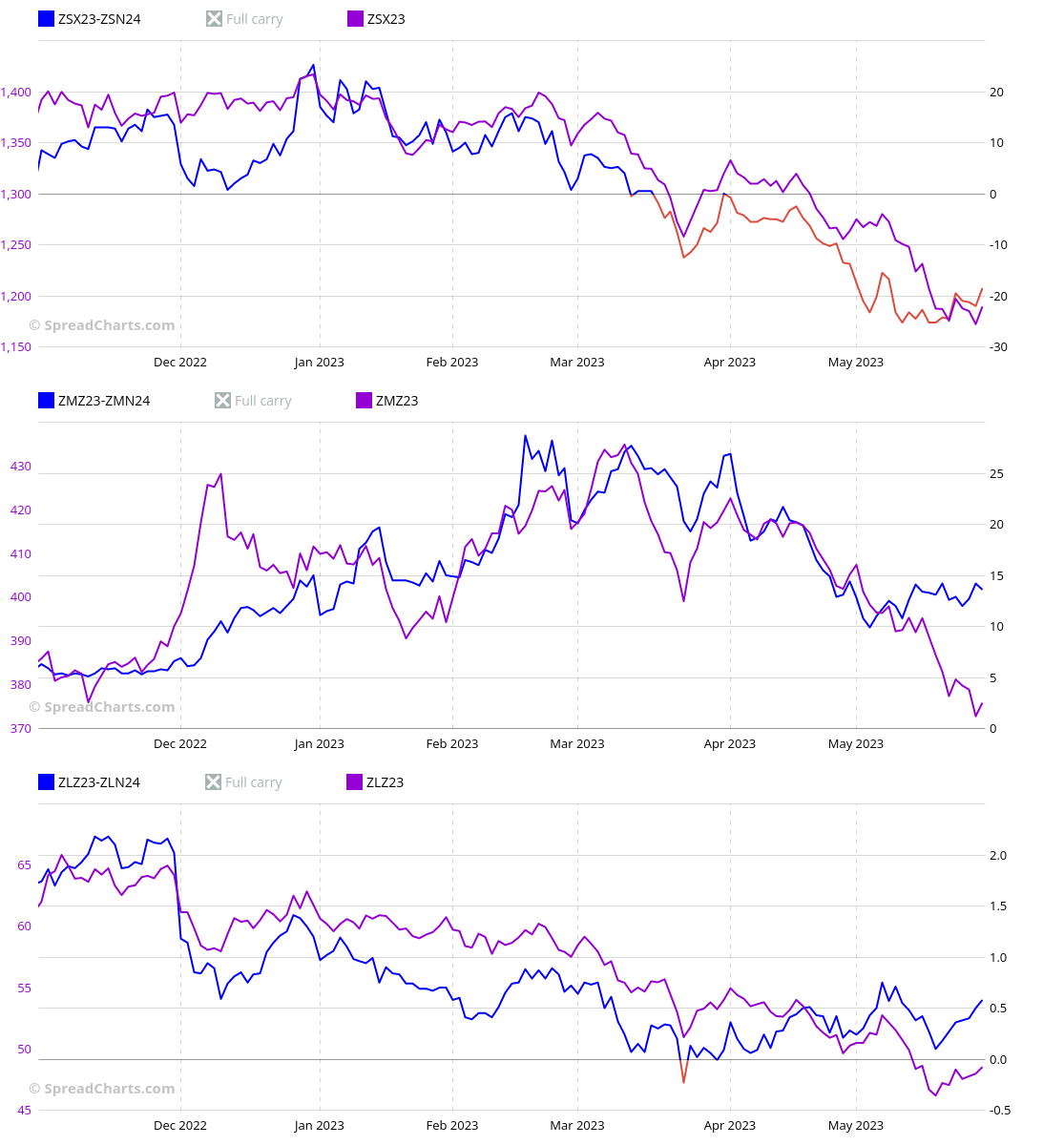Rare divergence in soybean complex
While I was browsing through charts in the SpreadCharts app this week, one in particular caught my eye. Here it is:
The chart displays interdelivery spreads (blue/red) for the soybean complex, specifically soybeans (top), soybean meal (middle), and soybean oil (bottom). The purple curves represent only the nearest futures contract from the spread.
Notably, the spreads (blue) are rising while the underlying contracts (purple) continue to trend downward in all three instances. Such divergences are typically indicative of physical tightness. Observing them across the entire soybean complex simultaneously is rare.
So, are soybeans and their products about to rise in value? Current seasonality certainly fosters favorable conditions for such a scenario. However, the seasonal uptrend is rather short-lived.
Nevertheless, the positioning is also favorable for a bulls. The soybean market has recently become quite oversold. Sure, there is ample room for even more extreme positioning, but, just like with seasonality, the Commitment of Traders (COT) report merely creates favorable conditions. It alone is insufficient to propel prices upward. A catalyst is required for that.
In truth, despite the confluence of bullish factors for soybeans, we preferred corn over soybeans, specifically certain bull spreads on corn. At the beginning of May, we alerted our users to a new strong signal on a corn bull spread, generated by the AI model at SpreadCharts.
Here is the signal. By the way, if you want to follow these signals, consider upgrading to the premium version of SpreadCharts.
The spread has made a handsome profit since we alerted you to it.
Is it wise to chase this spread now? The continuous histogram suggests the spread is already quite overbought.
But if you take a closer look at the stacked seasonality chart at SpreadCharts, you'll see that whenever this spread significantly exceeded the normal range, it usually ended with a bang. That's the surge above 100c into expiration.
This makes logical sense. The elevated bull spreads suggest strong physical demand for the old crop. As we approach the July expiration, anyone needing corn rushes to buy the July contract to secure enough supply, especially since the next harvest is still several months away.
So, would I hypothetically jump into the spread if I traded futures? The answer is no. This market is too wild and volatile for me. However, other people may like these aggressive strategies. The high risk certainly comes with larger potential return.
If you enjoyed the article, please click the like button at the bottom. Thank you!
Disclaimer
All information in this post is for educational purposes only and is not intended to provide financial advice. If any financial instruments, strategies, securities, or derivatives are mentioned anywhere in this post, it is solely for educational purposes.
SpreadCharts s.r.o., its affiliates, and/or their respective officers, directors, and employees may from time to time acquire, hold, or sell securities mentioned here.
SpreadCharts s.r.o. and its representatives bear no responsibility for actions taken under the influence of information published anywhere in this post and linked resources. There is a risk of substantial loss in trading futures, options, stocks, ETFs, or other financial instruments.








"""
Notably, the spreads (blue) are rising while the underlying contracts (purple) continue to trend downward in all three instances
"""
You sure about that? Or am I blind??